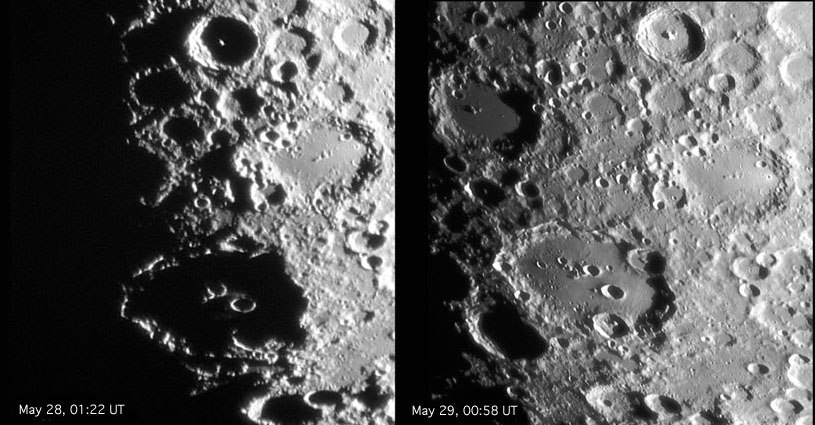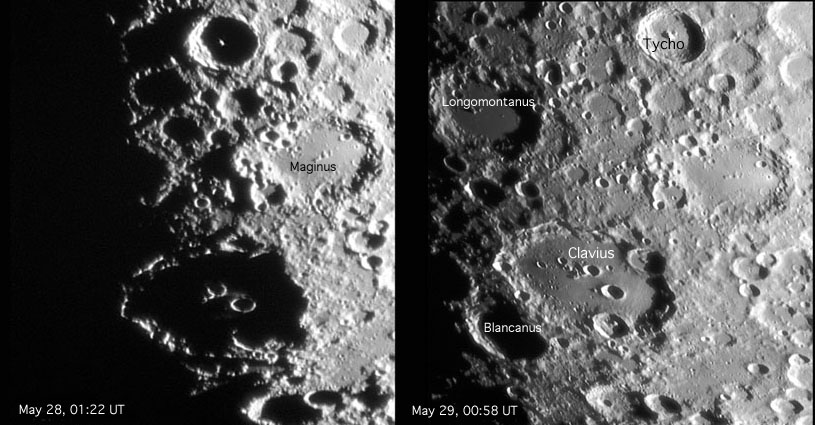October 8, 2004
What a Difference a Day Makes
Image Credit: Howard Eskildsen |
|
What a Difference a Day Makes One of the most common - and in a way, most exciting - things you can observe on the Moon is the shifting of shadows as the sun rises over each crater and mountain. It is this constant changing from night to night and hour to hour, complicated by librations and your own personal luck with clouds, mosquitos and tiredness, that makes each view of the Moon fresh. I believe that every time I observe I notice some feature in a different way than I ever have seen it before. Howard Eskildsen's two photos, differing by almost 24 hours, illustrate the dramatically different way craters appear from day to day. When the Moon is 9 days old (why don't we call it 9 nights old?) the terminator in the southern highlands is jagged from the shadowed floors of Clavius, Tycho and other large and deep craters. Tycho's central peak is a brilliant beacon, warming in the sun after 14 days of bitter cold. And Clavius is a sea of inkiness with twin island rings (Clavius C & D). Perhaps these are the spectacles of the Man in the Moon who is looking down on Earth. But by the next night, the mystery has moved westward, and Tycho and Clavius are nearly fully revealed, awaiting your view. Technical Details: Yesterday's LPOD: Diamondback Rille Tomorrow's LPOD: Marginal Maria |
|
Author & Editor: |
COMMENTS?
Register, Log in, and join in the comments.





